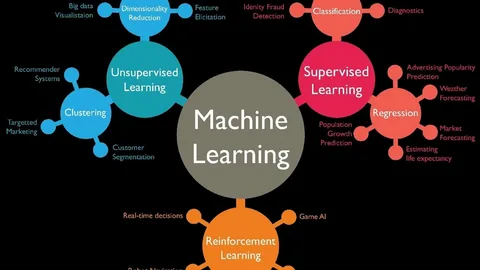Introduction
Every machine learning model, from simple linear regression to deep neural networks, depends on optimisation algorithms to minimise loss and improve accuracy. These algorithms are the engines that adjust model parameters so predictions become more reliable over time.
For learners pursuing a data scientist course in Nagpur, mastering optimisation techniques is crucial. Understanding the optimisation landscape not only helps in selecting the right algorithm but also in diagnosing problems like slow convergence, vanishing gradients, and overfitting.
What Is Optimisation in Machine Learning?
Optimisation refers to the process of minimising or maximising an objective function. In supervised learning, this is typically the loss function, which measures how far predictions deviate from actual outcomes.
For example:
- In regression → Minimise Mean Squared Error (MSE).
- In classification → Minimise Cross-Entropy Loss.
- In deep learning → Optimise millions of weights across multiple layers.
Types of Optimisation Problems
1. Convex Optimisation
- Involves functions where the global minimum is also the local minimum.
- Easier to solve, widely used in linear and logistic regression.
- Example: Ordinary Least Squares.
2. Non-Convex Optimisation
- Common in deep learning, where functions have multiple local minima.
- Requires advanced algorithms like Adam, RMSProp, and SGD with momentum.
First-Order Optimisation Algorithms
First-order methods use gradients to update model parameters.
1. Gradient Descent (GD)
- Determines the gradient of loss function and moves in the opposite direction.
- Works best for smaller datasets.
2. Stochastic Gradient Descent (SGD)
- Updates parameters after each data point instead of using the entire dataset.
- Faster but introduces noise, improving generalisation.
3. Mini-Batch Gradient Descent
- A hybrid of GD and SGD, processing small batches of data.
- Strikes a balance between speed and stability.
Second-Order Optimisation Algorithms
Second-order methods use the Hessian matrix to approximate curvature.
- Newton’s Method: Achieves faster convergence but is computationally expensive.
- Quasi-Newton Methods (e.g., BFGS, L-BFGS): Use approximations to improve scalability.
Adaptive Optimisation Algorithms
Adaptive methods adjust learning rates based on gradient history. These are particularly important for deep learning.
1. AdaGrad
- Assigns larger updates to infrequent features and smaller updates to frequent ones.
- Best for sparse datasets like NLP.
2. RMSProp
- Fixes AdaGrad’s diminishing learning rate problem by applying exponential moving averages.
3. Adam (Adaptive Moment Estimation)
- Combines RMSProp and momentum for efficient convergence.
- Default optimiser in frameworks like TensorFlow and PyTorch.
Challenges in Optimisation
1. Vanishing and Exploding Gradients
- Common in deep neural networks.
- Solved using techniques like gradient clipping, residual connections, and normalisation layers.
2. Saddle Points and Local Minima
- In high-dimensional spaces, optimisation can get stuck in flat regions.
- Advanced algorithms like Adam and Nadam handle these better.
3. Learning Rate Tuning
- Too high → Divergence.
- Too low → Slow convergence.
- Use techniques like learning rate schedules and cyclical learning rates.
Applications of Optimisation Algorithms
1. Deep Neural Networks
- Training millions of parameters requires adaptive algorithms like Adam and RMSProp.
2. Natural Language Processing
- Embedding models like BERT and GPT rely on optimisation for contextual word representations.
3. Computer Vision
- CNNs for image recognition require fine-tuned optimisers for faster convergence.
4. Reinforcement Learning
- Policy gradient methods optimise strategies by updating probabilities iteratively.
Tools and Frameworks
- TensorFlow & PyTorch: Built-in optimisers like SGD, Adam, RMSProp.
- scikit-learn: Optimisation for classical models like regression and SVMs.
- Keras: Easy integration with custom optimisation strategies.
- Optuna & Hyperopt: Advanced libraries for automated hyperparameter tuning.
Students in a data scientist course in Nagpur get practical exposure to these tools, learning to compare optimisers and select the best one for each project.
Case Study: Optimising a Deep Learning Model
Scenario:
A fintech startup wanted to classify fraudulent transactions from millions of records.
Approach:
- Started with SGD but found convergence too slow.
- Switched to Adam, achieving better learning rates.
- Implemented learning rate schedulers to fine-tune performance.
Results:
- Improved training speed by 40%.
- Increased model accuracy from 87% to 94%.
- Reduced computational costs by optimising hyperparameters.
Best Practices in Optimisation
- Start Simple: Begin with SGD, then switch to adaptive algorithms if needed.
- Normalise Inputs: Standardised data accelerates convergence.
- Tune Learning Rates Carefully: Use schedules or automatic tuning tools.
- Monitor Convergence: Use loss plots to avoid underfitting or overfitting.
- Leverage Regularisation: Techniques like dropout and L2 penalties improve stability.
Future of Optimisation
1. Meta-Learning Optimisers
Models will learn how to optimise themselves based on prior experience.
2. Quantum Optimisation
Quantum algorithms promise exponential speed-ups for complex, non-convex problems.
3. Hybrid Optimisers
Combining traditional and adaptive methods for improved accuracy and stability.
4. Automated Machine Learning (AutoML)
Optimisers will become self-configuring, reducing manual tuning efforts.
Conclusion
Optimisation algorithms are at the heart of every machine learning pipeline. From classical models to cutting-edge deep neural networks, selecting the right optimiser impacts accuracy, speed, and generalisation.
For aspiring professionals, enrolling in a data scientist course in Nagpur provides the theoretical foundation and practical skills needed to implement, evaluate, and fine-tune optimisation algorithms across diverse applications.



